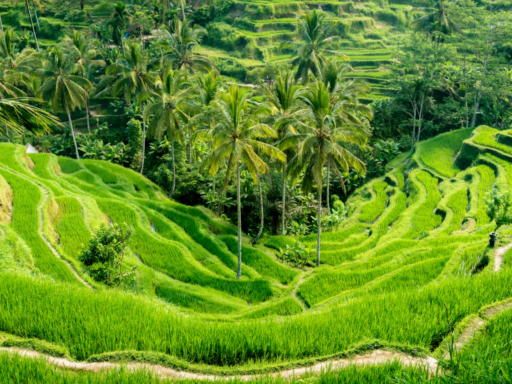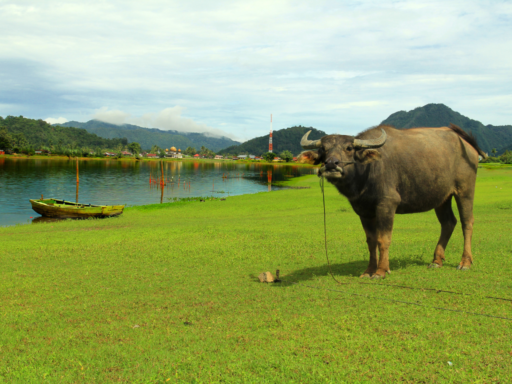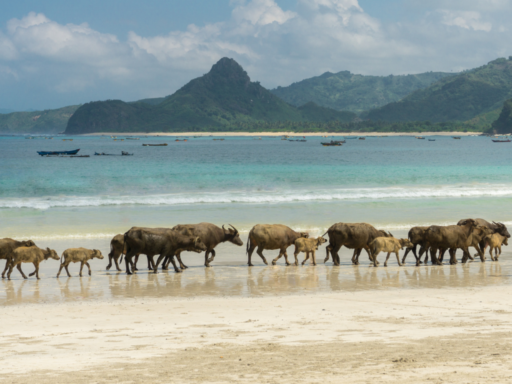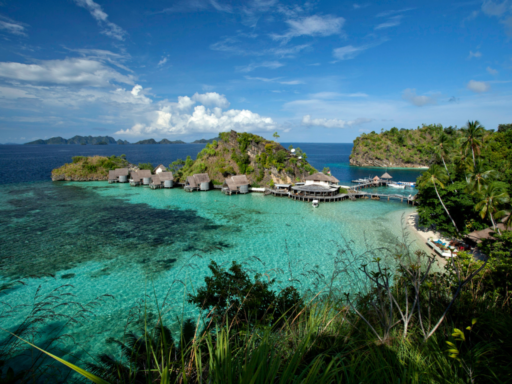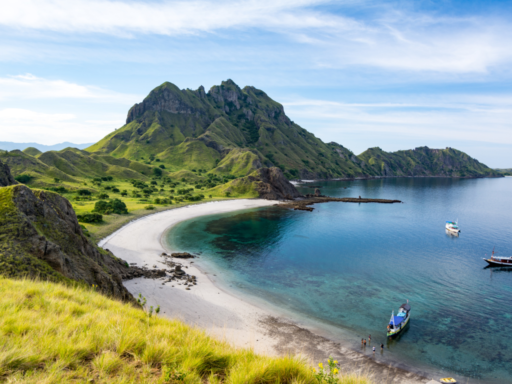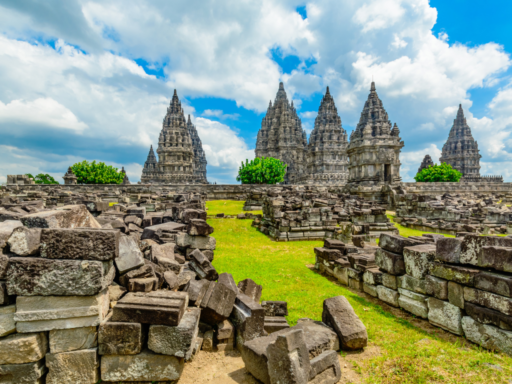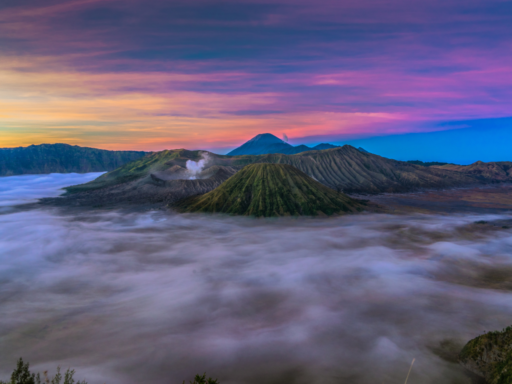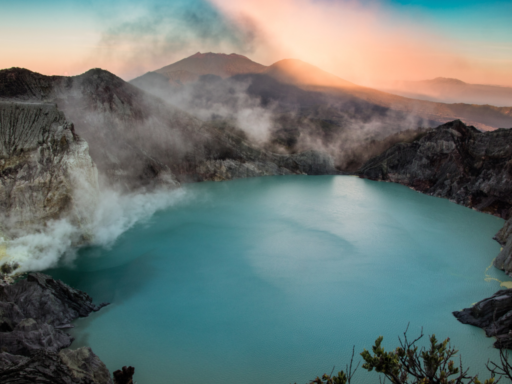INDIAN OCEAN TRAVEL by TOURISMER
INDIAN OCEAN TRAVEL by TOURISMER

Responsible travel Indonesia
With over 17 000 islands extended over 5 000 km and an area of 2 000 000 km², Indonesia is the largest archipelago in the world.
Indonesia is home to hundreds of ethnic groups speaking their own languages.
Jakarta, a dynamic and sprawling capital, is on the island of Java, as is the city of Yogyakarta known for gamelan music and traditional puppets.
Indonesia is also known for its beaches, its volcanoes, its Komodo dragons and its jungles where elephants, orangutans and tigers live, quite the program!
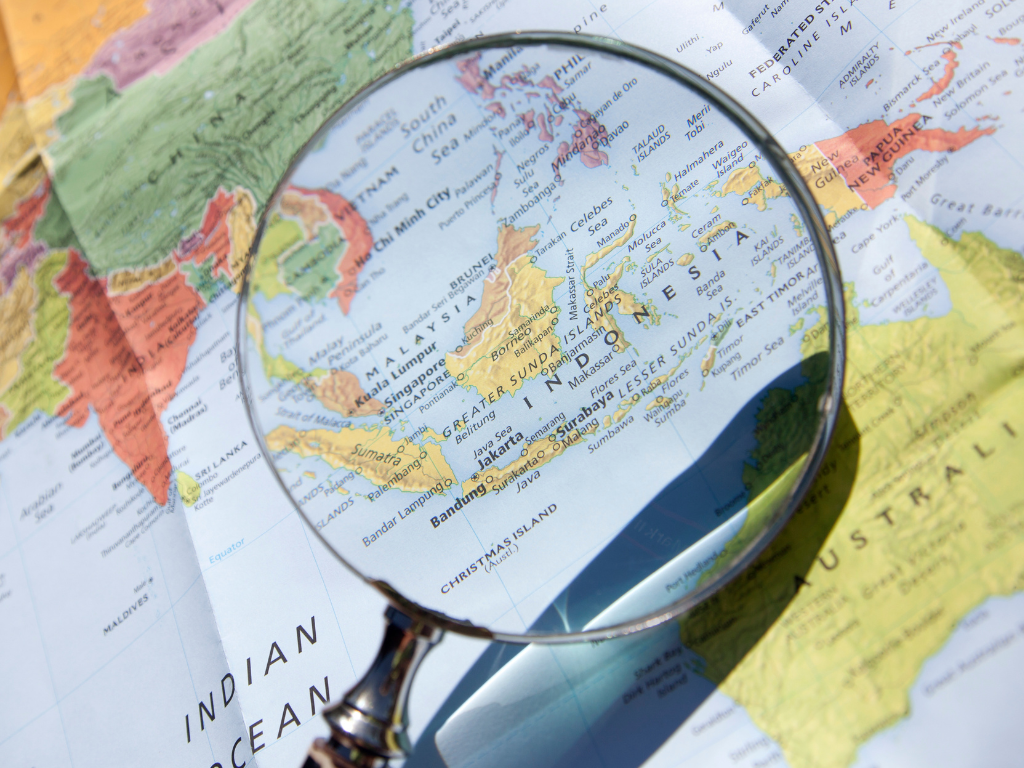

In this country where the demand for tourism is growing very rapidly, there is a certain risk of development with little consideration of the fundamentals of sustainable tourism development: the conservation of natural heritage and environmental resources.
The creation of a label and a national certificate, in accordance with the 17 Sustainable Development Goals (SDGs) advocated by UNWTO would be a solution to decide on responsible tourism, and support actors working to make tourism sustainable.
Fossil remains, known as Java Man, suggest that the Indonesian archipelago was populated 2 million years ago.
At the time of the Würm glaciation, it was connected to the Asian continent. Indonesia was then the place of passage for migrations which, from 70,000 to 40,000 years ago, went from Asia to Australia. Austronesian-speaking population migrations, which form the majority of the modern population, begin around 2000 BC. AD from Taiwan to the Philippines.
Indonesia's strategic position as a maritime crossroads promotes inter-island ties and trade with India and China. At the Ist century AD, western Indonesia is part of a network of port states that trade with each other and with India and China. This is how the clove, brought to India by traders from the Indonesian archipelago and from there to the Middle East, has been known since antiquity.
In central Java, ideal conditions for agriculture and the mastery of rice paddy techniques from the VIIIe century allow the development of a prosperous rice cultivation.
At the end of the Xe century, the center of power shifted from Central to East Java. There too, a prosperous agriculture made the island the rice bowl of the archipelago, ensuring the power of the successive kingdoms of Kediri under the reign of Hayam Wuruk. This period is often referred to as the "golden age" of Java.
Muslim merchants from Persia, India and China approach the ports of the Indonesian archipelago. Probably in the XIIIe century, princes of North Sumatra converted to Islam, eager to integrate into this commercial network. The XVse and XVIe centuries thus saw the rise of Muslim coastal states, the most prosperous of which was Malacca on the Malay Peninsula, which became the largest port in Southeast Asia. In Java, the principalities of the north coast, the Pasisir, some founded by Chinese Muslims, are gradually freeing themselves from their Hindu-Buddhist overlords of Majapahit. The most powerful of them is Demak.

At the end of the sixteenthe century, a new power in central Java, the kingdom of Mataram, undertook the conquest of these Muslim port cities. Under Mataram flourished a court culture whose references continue to be the models represented by the great Indian epics of the Mahabharata and the Ramayana.

In the XVIIe century, in the north of Sumatra, under the reign of Iskandar Muda, the sultanate of Aceh undertook the conquest of the coastal regions of the island, as well from the east on the Strait of Malacca, as from the west on Indian Ocean. In the east of the archipelago, under Sultan Hasanuddin, the kingdom of Gowa, whose rulers converted to Islam in 1605, subjugated each principality of southern Sulawesi one after the other.
The Portuguese, who took Goa from India in 1510, conquered Malacca in 1511.
In 1602, the Dutch parliament gave the Dutch East India Company (VOC) the monopoly of commercial and colonial activities in Indonesia, thus reversing the Hispanic power of Philip II of Spain on its Asian side. She manages, unlike the Portuguese, to control the spice trade in the archipelago.
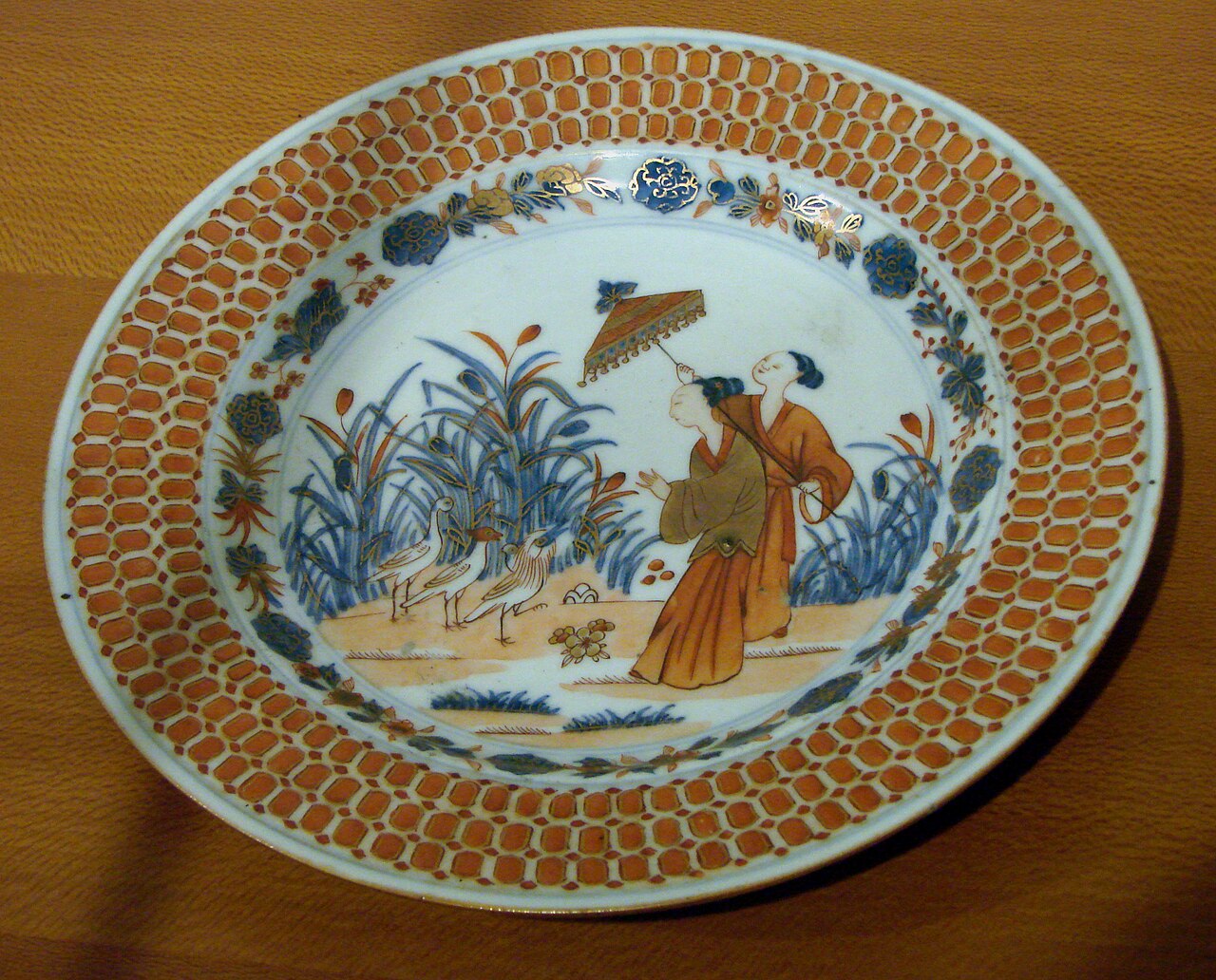
In the second half of the XVIIe century, after the death of Sultan Agung, Mataram was undermined by the wars of succession and had to gradually cede territories to the Dutch. At the end of the 18the century, the VOC also controls the entire northern coast of Java.
In 1800, the VOC was dissolved for bankruptcy. From 1808 to 1811, Herman Willem Daendels became Governor-General of the Dutch East Indies, appointed by Louis Bonaparte, King of the Netherlands, and reformed the colonial administration. In 1824, by the Treaty of London between the British and the Dutch, control of the claimed territories south of Singapore returned to the Dutch. The Malay world finds itself divided in two.
The Dutch are launching what they call the ethics policy. It includes minor political reforms and the education of indigenous populations.

Peace in Java also allowed the Dutch to gradually subdue the various princely states of the rest of the archipelago, in Sumatra. In 1908, the end of the conquest of Bali and the Aceh War completed the formation of the Dutch East Indies.
Unlike other colonial powers, the Dutch left little linguistic heritage in their colony.
It is considered that the creation, that same year, of the Budi Utomo by young Javanese nobles marks the beginning of the Indonesian national movement. A "Youth Oath" was pronounced in 1928, expressing the wish to create an Indonesian homeland.
Second World War
On December 8, 1941, Japan, an Axis state, invaded Indonesia while the Netherlands was invaded by Germany. Japan's occupation policy forces 4 million natives to be employed in forced labor like the "Death Railway". As for the Dutch settlers, mestizos or other Western nationals, they were deported to camps where the mortality rate was 25%. At the end of the war, 10% of the 350,000 Westerners (mainly Dutch) died.
Independence
Two days after Japan's surrender on August 17, 1945, Soekarno and Mohammad Hatta proclaimed the country's independence and became the country's first president and first vice-president respectively on December 27, 1949, creating the United States Republic. United of Indonesia. The Netherlands recognizes the partial independence of the country.
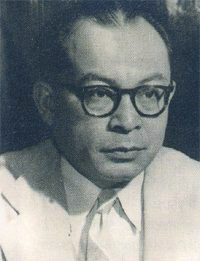
Soekarno period
The 1950s were marked by numerous separatist rebellions. Soekarno was forced to deal with two important formations in the countries: the military forces and the Indonesian Communist Party. During the 1960s Soekarno bent his policy towards communism by establishing the principle of Nasakom.
Soeharto took power in 1966 and kept it for more than 30 years.
Soeharto period
In the 1960s, tensions rose in the population, and even more so in the army between conservatives and pro-communists.
The Communist Party was quickly banned and Communist activists and sympathizers systematically massacred. The number of victims of the ensuing massacres is estimated at between 500,000 and 3 million people. More than a million people are held without trial for years, many of them tortured.
In March 1966, Soeharto forced Soekarno, whose political strength was weakened, to transfer power to him. He was officially named president in March 1968 with the support of the American government.
For the next thirty years, Soeharto exercised dictatorial power. two hundred villages "infected" with Communists are purged by the army, probably at the cost of around 6,000 casualties. In December 1975, Indonesia invaded and annexed the former Portuguese colony of East Timor, subjecting the local population to terrible repression. The massacres caused the death of approximately 200,000 Timorese, or a quarter of the country's population.
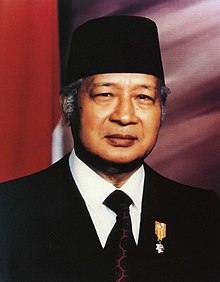
In 1997 and 1998, Indonesia was the country most affected by the Asian economic crisis. Like other Asian countries, Indonesia is facing a massive influx of foreign capital which then withdraws, destabilizing the currency and then the economy of the countries.
Popular discontent grew and led to the Jakarta riots of May 1998. Soeharto resigned and his vice-president, Bacharuddin Jusuf Habibie, became president.
In August 1999, the first democratic elections in Indonesia since 1955 were held. These saw the victory of Abdurrahman Wahid, deposed in 2001. His vice-president, Megawati Sukarnoputri, Soekarno's daughter, then took over the presidency.
Since 2000, Indonesia has faced a wave of Islamist terrorist attacks, including the bombing of the Jakarta Stock Exchange in 2000 and that of Bali in 2002. In 2004, thanks to an amendment to the constitution, the first election was held presidential election by direct suffrage. Susilo Bambang Yudhoyono is elected president.
The country is struggling to get rid of the institutionalized corruption that prevailed under the dictator Soeharto and still has many corruption cases involving both the business community and the authorities.
Indonesia is the second linguistic reservoir in the world, there are nearly 700. This very wide variety of local languages is explained both by the size of this country, but above all by its geography: the Indonesian archipelago includes nearly of 17,000 islands, the largest of which are traversed by steep chains of volcanoes and tropical forests. This particular arrangement explains the significant isolation of many populations and the persistence of their cultures, religions and local languages over time.
Since its independence, Indonesia has used a single language for administration and education: Indonesian.
The state officially recognizes six religions: Islam (87%), Protestantism (7%), Catholicism (3%), Hinduism (1.7%), Buddhism and Confucianism.
The different ethnic groups of Indonesia each have a rich tradition.
Architecture
Indonesian architecture has borrowed from many sources: Indian then Chinese and Arab and finally European, while keeping its own characteristics.
Literature
The Indonesian poet Sapardi Djoko Damono suggests limiting the scope of modern Indonesian literature to printed texts, because the printing press “marks the division between ancient and modern literatures».
Indonesia is a recent nation, which declared its independence in 1945.
Literature written as early as the 1920s in Malay, from an Indonesian nationalist perspective, is therefore considered to be already "Indonesian literature".
One can include in Indonesian literature that written by people whom Indonesia considers to be part of the national movement. The most eminent of these people is Raden Ayu Kartini, a Javanese aristocrat who wrote in Dutch to denounce the condition imposed on Javanese women of his time.

More information : https://fr.wikipedia.org/wiki/Littrature_indonsienne
Painting
Prehistoric cave paintings have been discovered at several sites in Indonesia. . The cave paintings have been dated to around 40,000 years old.
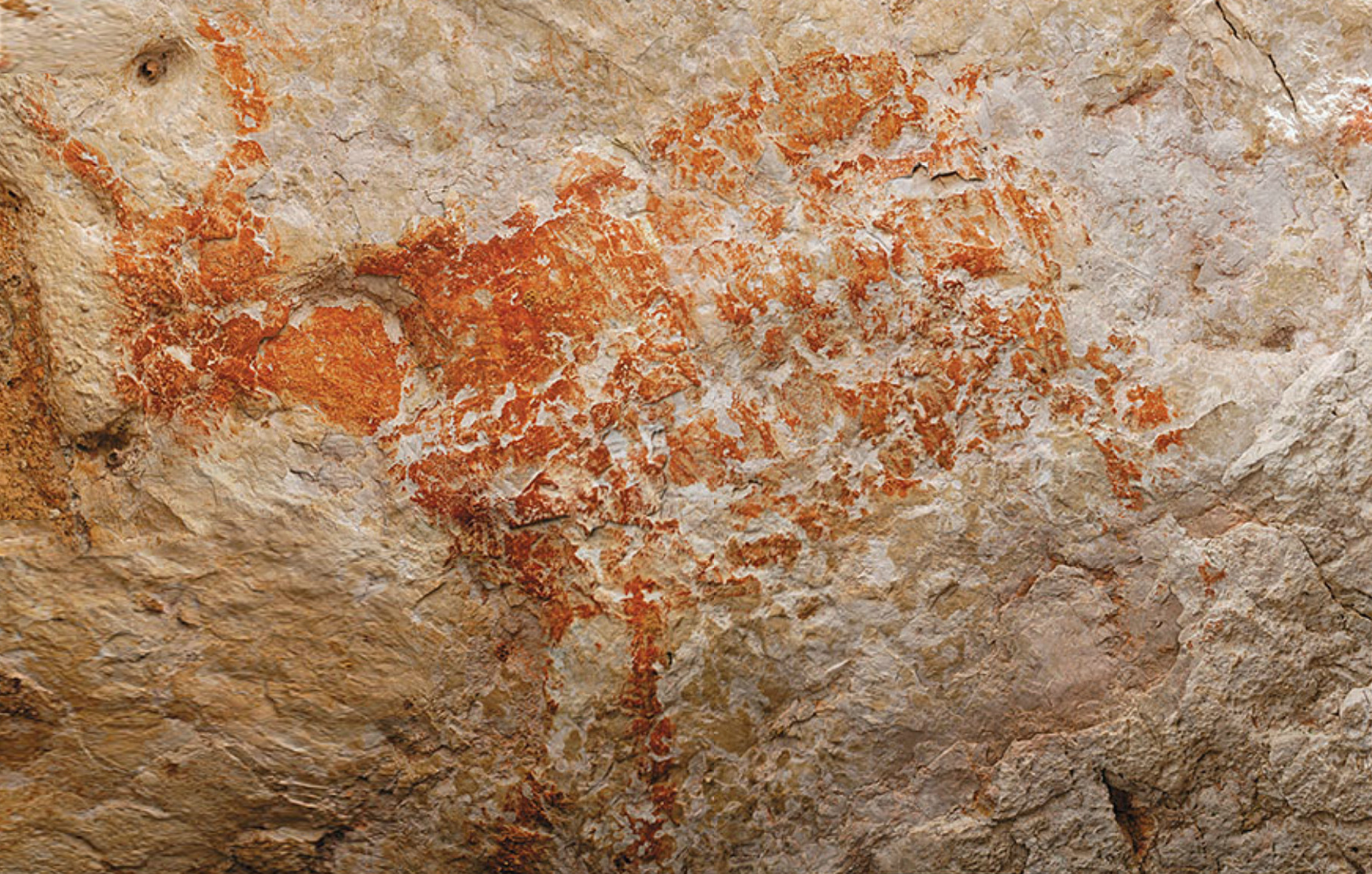
The art of painting is developed in Bali. The tradition of Balinese art paintings begins as Kamasan or Wayang narrative painting, derived from East Java visual art discovered on East Java candi bas-reliefs.

Modern Indonesian paintings are pioneered by Raden Saleh, a nineteenth-century Arab-Javanese painter renowned for his romantic and naturalistic work during the Dutch East Indies period in Indonesia.
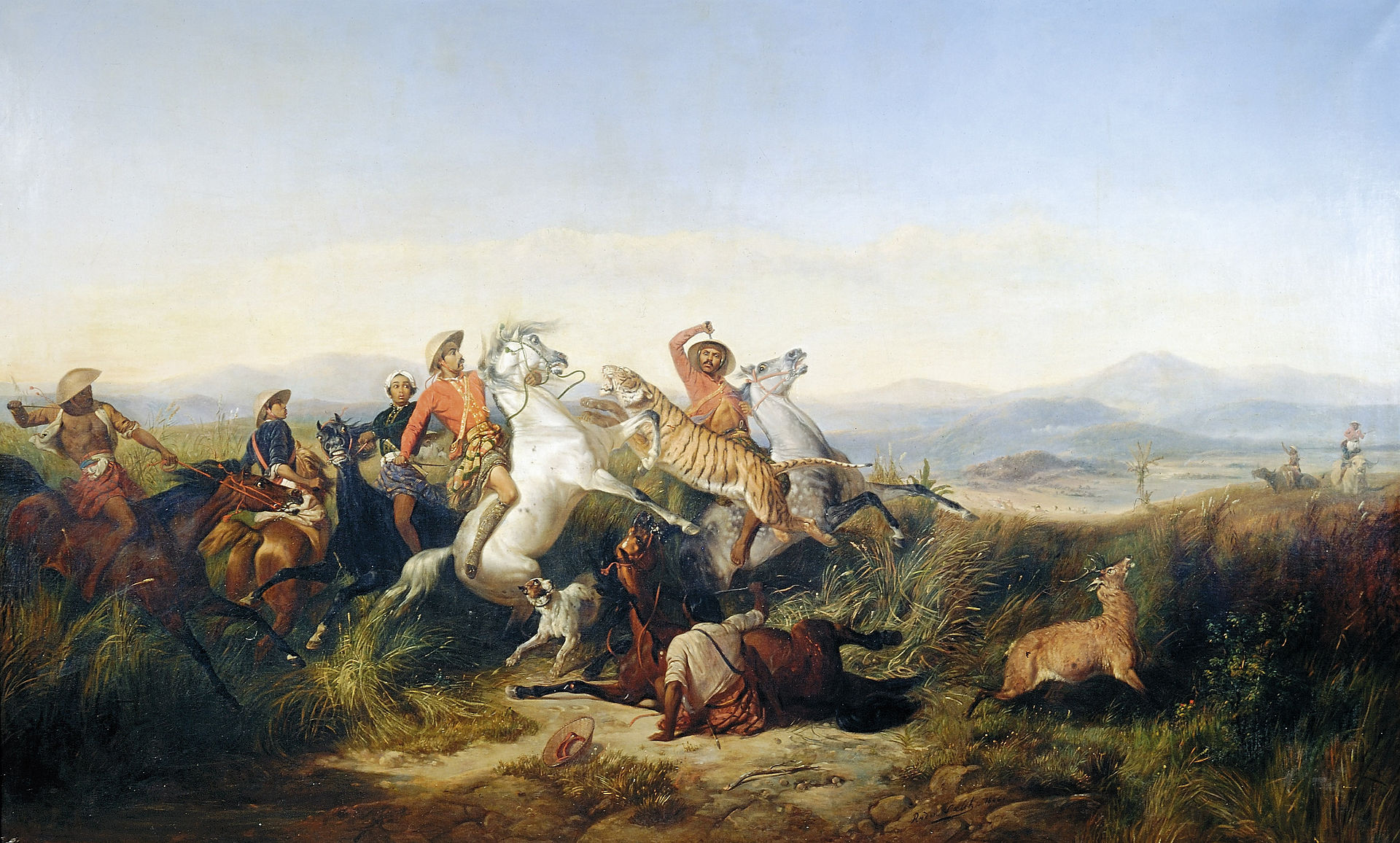
Music
The indonesian music consists of music unique to the various ethnic and religious groups that populate the Republic of Indonesia, and music that its citizens recognize as belonging to the whole nation.
Traditional music
It is represented mainly by ensemble music gamelan from Bali, Java, Lombok, Kalimantan and Sunda, composed of 60 to 80 musical instruments and each village has its own variety. Much of this ensemble music accompanies the many Indonesian theatrical forms.

Instrumental music, gendhing, uses the pentatonic laras slendro and heptatonic laras pelog scales.
More information: https://fr.wikipedia.org/wiki/Musique_indonsienne

Dance
When we speak of "Indonesian dance", we must distinguish between: traditional dances (religious, ceremonial, ritual or ceremonial), which are specific to a given group, and dance in the modern sense, which concerns the whole of the 'Indonesia.
Indonesian dances are very diverse, each ethnic group has its own dances: there are about three thousand of them! The ancient traditions of dance and theater are preserved in dance schools, in the courtyards or outdoors, public or private.
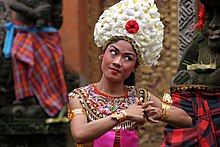
Theater
Traditional Indonesian theater encompasses scripted dance performances, Balinese masked theater and more generally the wayang.
The wayang is a traditional puppet show. The wayang kulit is a shadow theater with flat leather puppets. It has a ritual aspect and lasts several hours (initially a whole night) during important events: village festival, weddings It is mainly present on Java.
Textiles and Carpets
Textile : theikat (weaving of fabrics with patterns originating from Nusa Tenggara but widespread throughout the archipelago), the songket (silk fabric interwoven with gold and silver threads), the carpet of Lampung or the famous batik (drawing with wax and dye on fabrics) Javanese.

Pottery
Pottery developed in Indonesia as early as 400 BCE. Clay pottery was later developed. Artifacts such as food and drink vessels, dated to 400 BC to AD 100 are found, mostly as grave offerings.
From the thirteenth to the fifteenth century, approximately, the kingdom of Majapahit develops its art of terracotta.
Kasongan terracotta is famous for its earthenware, vases and jars, earthenware cooking utensils, teapot and cup sets, human and animal figurines (e.g. horses and elephants) as well as a piggy bank. A similar terracotta art also develops in the Plered region, near Purwakarta in West Java.
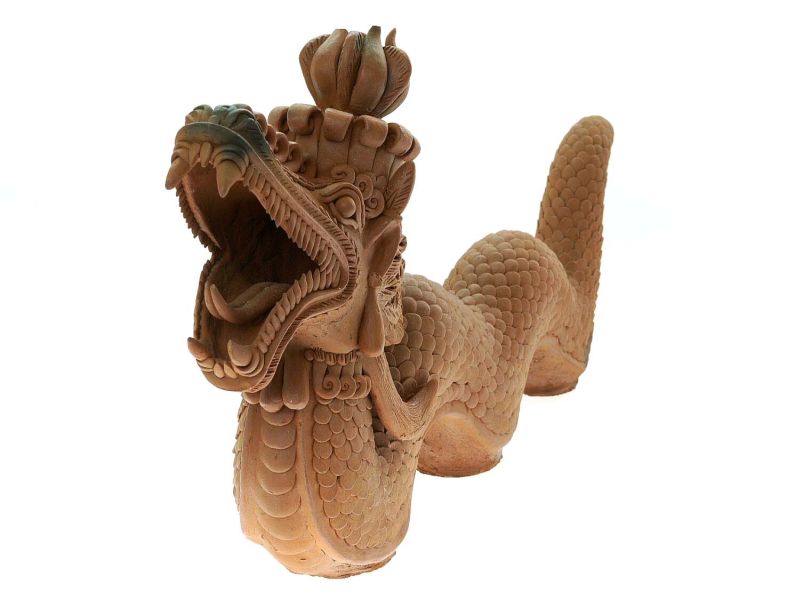
Sculpture, jewelry
Wood carving is also very common in Indonesia. These sculptures were originally intended to protect houses against evil spirits. This function is always present. On many islands, utilitarian objects are carved out of wood: bamboo containers in Sulawesi or lacquered wooden bowls in Sumatra for example. In Bali and Java in particular, the manufacture of ornate furniture is highly developed, especially teak furniture, which is highly sought after. Carved wooden masks are very frequently used during community rites or in the theater.
Bronze working in Indonesia was introduced by the Dong Son culture (VIIIe–IIIe century before J.-C.]). The appearance of iron working is later, partly due to the scarcity of local ore, mainly of meteoric origin. In Java and the other islands in the west of the archipelago, they make kriss, ceremonial daggers with straight or sinuous blades richly worked. The Aceh region specializes in jewelry, especially in gold work. In Bali, jewelry is more silver. The district of Kotagede in Yogyakarta, Java, specializes in the creation of silverware and mainly, table silverware.

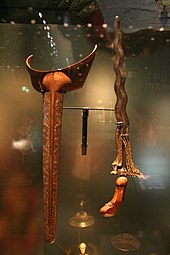
Il s’agit d’un ensemble de gastronomies régionales. L’influence des cuisines étrangères a fait changer la cuisine indonésienne au fil du temps. C’est tout d’abord la cuisine indienne qui l’a influencée, puis la cuisine chinoise. Enfin, ce sont les cuisines espagnole et portugaise puis finalement néerlandaise qui l’ont influencée.
Indonesians consume little pork given the predominance of the Muslim religion in the country. Dishes are made with chicken , du canard ), du bœuf ou du poisson.
Some emblematic dishes:
Nasi Goreng
The nasi goreng is designated as the “national dish” of Indonesia. It literally means "fried rice". It is a dish of rice fried in oil, seasoned with kecap manis (sweet soy sauce), shallot, garlic, tamarind, along with other ingredients, such as egg, chicken and shrimp.
Bali Guling
It's simply a spit-roasted suckling pig stuffed with peppers, garlic, ginger.

Gado Gado
The gado-gado is an Indonesian culinary specialty, consisting of a salad crunchy vegetables topped with a peanut sauce.
In 2018, the gado-gado est promu comme l’un des six plats nationaux de l’Indonésie.
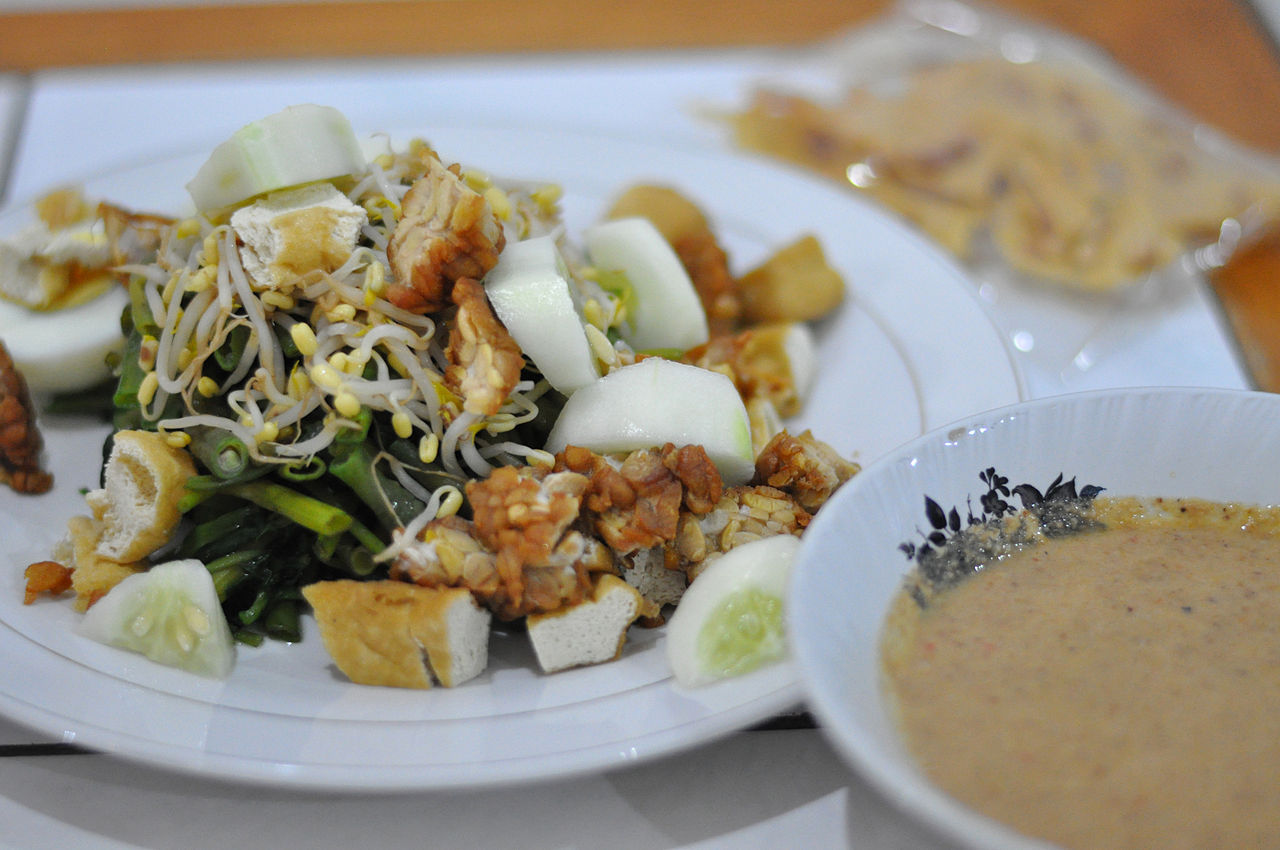
The islands of Indonesia have everything to please: treks in rice fields and tropical forests, ascents of volcanoes, discovery of many temples, encounters with ethnic groups and a mild climate all year round, conducive to bathing in the discovery of reefs corals.
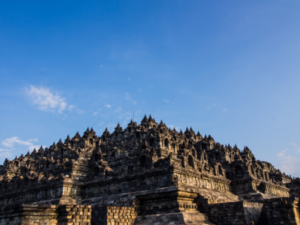
Borobudur is one of the most important Buddhist sites in the world. It is a unique example of 9th century Indonesian art. Of perfect proportions, the temple is built of blocks of volcanic stone.
Pyramidal in shape with open terraces, one can admire the sculptures of Buddha erected in open stupas. It is very popular, worthy of comparison with the temples of Angkor in Cambodia or Bagan in Burma. To complete this enchanting spectacle, the site is located near the Merapi volcano, in a superb setting of palm trees and rice fields.
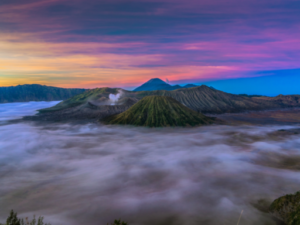
Several volcanoes dominate the territory of East Java, in the middle of tobacco and coffee plantations. In the Tengger-Bromo-Semeru National Park, the grandiose and sacred Bromo volcano, culminates at an altitude of 2,329 m.
Meet at dawn to admire the breathtaking panorama of the smoky mountains, from a vantage point, for example near the village of Cemoro Lawang. Behind the Bromo, the Semeru volcano completes this unreal landscape by spewing its smoke at regular intervals. Take the time to explore the huge caldera around Bromo. In this sea of volcanic sand, we find ourselves very small facing lunar landscapes of gigantic proportions.
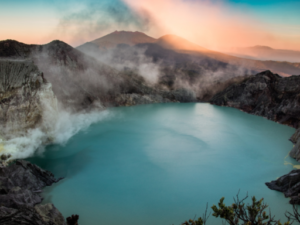 Kawah Ijen contains the most acidic lake on the planet. It is a volcanic wonder. Its crater culminates at 2,400 m altitude and a mineral and lunar landscape. At the top, the turquoise green lake contrasts with the sulfur fumes rising from the crater. The miners descend into the bowels of the volcano, nearly 900 meters below, to fetch a few kilos of sulphur. Climb at night to witness the blue flame phenomenon, or come early in the morning to witness the magical spectacle of the sunrise over one of Indonesia's most beautiful volcanoes.
Kawah Ijen contains the most acidic lake on the planet. It is a volcanic wonder. Its crater culminates at 2,400 m altitude and a mineral and lunar landscape. At the top, the turquoise green lake contrasts with the sulfur fumes rising from the crater. The miners descend into the bowels of the volcano, nearly 900 meters below, to fetch a few kilos of sulphur. Climb at night to witness the blue flame phenomenon, or come early in the morning to witness the magical spectacle of the sunrise over one of Indonesia's most beautiful volcanoes.
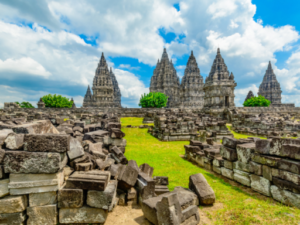
At the foot of the Merapi volcano lies the Prambanan site. It is a complex of over 240 Hindu temples built in the 9th century. The most remarkable have been restored. In front of the central Hindu temple, we admire the almost perfect proportions of this imposing structure erected on an immense rectangular platform.
The closest heavenly beaches are here: warm turquoise sea, preserved coral reefs, atmosphere at the end of the world. It is also an excellent spot for snorkeling in the exceptional seabed and swimming among (harmless) sharks, rays and sea turtles.
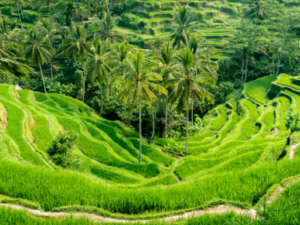 The region of Sulawesi, formerly Celebes, is a little-known Indonesian treasure. In the mountains, animist beliefs are still practiced, mixed with a little Christianity.
The region of Sulawesi, formerly Celebes, is a little-known Indonesian treasure. In the mountains, animist beliefs are still practiced, mixed with a little Christianity.
The landscapes of terraced rice fields and the still very strong local traditions have made Sulawesi famous. The Toraja country is the cultural destination par excellence in Sulawesi, known for its houses with amazing architecture and its funeral ceremonies. In this cultural mix, you will meet the Bugis, perhaps the best sailors in Indonesia, who build huge traditional wooden boats.
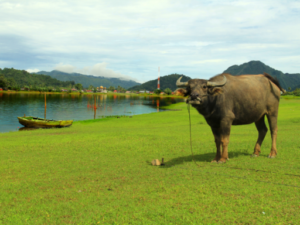 Sumatra represents authentic Indonesia, that of a wild nature, refuge of orangutans and lush vegetation. It is also a mosaic of peoples and ethnic groups: the Minangkabau culture, the Batak people of Lake Toba,...
Sumatra represents authentic Indonesia, that of a wild nature, refuge of orangutans and lush vegetation. It is also a mosaic of peoples and ethnic groups: the Minangkabau culture, the Batak people of Lake Toba,...
Gunung Leuser National Park is home to many endemic species, including the famous orangutan, literally "the man of the forest". It is one of the few places in the world where you can observe orangutans in the wild, but also the Rafflesia, the largest flower in the world.
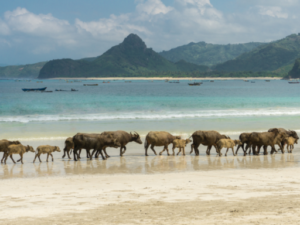
It is a more rustic atmosphere, a different local culture with the Sasaks and breathtaking nature. We come to Lombok looking for white sand beaches, which are more difficult to find in Bali.
Climbling Rinjani volcano is a must do hike in Asia, even in the world. It is one of the most beautiful volcanoes to climb, one of the most difficult too. At the top, your efforts will be rewarded with a brilliant blue crater lake and breathtaking views of the surrounding islands.
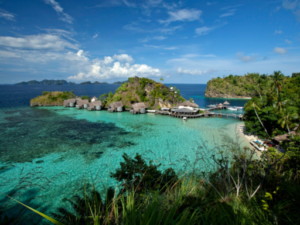
Papua occupies half of the island of New Guinea. We travel between the Asian world and the Pacific world, that of the beginnings of Oceania. Other cultures, other peoples, other worlds.
This region will also surprise you with its reliefs, among the highest in Southeast Asia. Finally, we come here to meet the Papuans, a population of about 250 different ethnic groups. These tribal peoples still have a very strong connection with nature, whether at sea or inland.
The Raja Ampat, in the northwest of Papua, are a paradise for divers who come from all over the world to admire some of the most diverse underwater life in the world. The Raja Ampat archipelago, literally the 4 Kings, is also full of birds and breathtaking landscapes. Idyllic beaches, multicolored coral gardens, karst cliffs covered with tropical forests populated by birds of paradise.
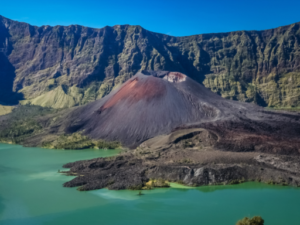
The mighty Rinjani Mountain of Gunung Rinjani is a massive volcano that towers over the island of Lombok. A climb to the top is one of the most exhilarating experiences you can have in Indonesia. Culminating at 3,726 meters, Gunung Rinjani is the second highest mountain in Indonesia. The climb to the top may not be easy, but it is well worth the effort and is widely regarded as one of the best views in the country.
Part of the famous "Ring of Fire", this mountain also holds spiritual significance for local people. The name Rinjani is believed to come from an old Javanese term for "God".
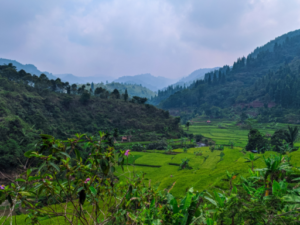 The park is one of the oldest nature reserves in Indonesia. Beginning around 1819 when the Dutch colonial government planned to build a botanical garden at the foot of the mountains in Cibodas. Many naturalists had climbed the twin peaks, including Junghun who introduced the quinine plant to the archipelago. There are different hiking routes that allow visitors to cross from Cibodas to Gunung Putri or Selabintana, vice versa. It will take about 8-10 hours of walking for the medium speed. Hikes will take visitors through hot sulfuric cerek, alpine meadow and tropical rainforest.
The park is one of the oldest nature reserves in Indonesia. Beginning around 1819 when the Dutch colonial government planned to build a botanical garden at the foot of the mountains in Cibodas. Many naturalists had climbed the twin peaks, including Junghun who introduced the quinine plant to the archipelago. There are different hiking routes that allow visitors to cross from Cibodas to Gunung Putri or Selabintana, vice versa. It will take about 8-10 hours of walking for the medium speed. Hikes will take visitors through hot sulfuric cerek, alpine meadow and tropical rainforest.
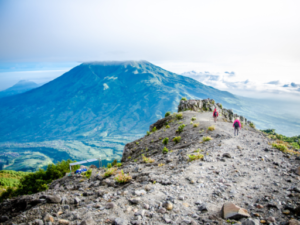 Mount Merbabu National Park is a national park in Central Java. The topography of the Mount Merbabu National Park area is mostly hilly to mountainous with an elevation of about 3,142 meters and in some places there are very steep ravines and cliffs, such as the Sipendok ravine in the area of the village of Candisari.
Mount Merbabu National Park is a national park in Central Java. The topography of the Mount Merbabu National Park area is mostly hilly to mountainous with an elevation of about 3,142 meters and in some places there are very steep ravines and cliffs, such as the Sipendok ravine in the area of the village of Candisari.
Il existe trois zones floristiques dans le parc national du mont Merbabu :
The low mountain forest zone is invaded by Pinus merkusii and Schima wallichii ssp. noronhae.
High mountain forest area invaded by species of acacia, Albizia lophanta, Engelhardtia serrata, Casuarina junghuhniana and Quercus sp.
Area of subalpine forest covered with grasses and Javanese edelweiss.
Several types of animals: Javanese falcon eagle, black eagle, spotted kestrel, crested serpent eagle, waterfowl, spotted dove, chickadee, muntjac, porcupine, civet, macaque long-tailed, Javanese leopard and others.
 Bromo Tengger Semeru National Park is a national park located in the eastern part of Java Island . It is made up of a mountainous region whose highest point is Mount Semeru at 3,676 m, the highest peak in Java. The Tengger Massif and Mount Bromo are part of the park.
Bromo Tengger Semeru National Park is a national park located in the eastern part of Java Island . It is made up of a mountainous region whose highest point is Mount Semeru at 3,676 m, the highest peak in Java. The Tengger Massif and Mount Bromo are part of the park.
It is the largest volcanic region in the province, and the most magical!
An active volcano, Mount Semeru, rises to 3,676 meters. Discover the remarkable Tengger Caldera, the largest sea of sand in Java with 10 km of desert, it's magic!
Within the caldera, the fissured volcanic cones of Batok and Bromo billow smoke and are constantly changing. To the south of the park, there is a hilly high plateau, cut by valleys and dotted with several small picturesque lakes, which extend to the foot of Mount Semeru.
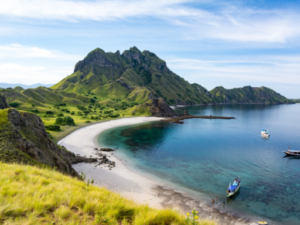 These volcanic islands are inhabited by a population of around 5,700 giant lizards, whose appearance and aggressive behavior have earned them the nickname "Komodo dragons". They are found nowhere else and are of great scientific interest for the study of evolution. The rocky hills covered with a dry savanna dotted with thorn trees make an extraordinary contrast with the beaches of dazzling white sand and the blue waves breaking on the corals.
These volcanic islands are inhabited by a population of around 5,700 giant lizards, whose appearance and aggressive behavior have earned them the nickname "Komodo dragons". They are found nowhere else and are of great scientific interest for the study of evolution. The rocky hills covered with a dry savanna dotted with thorn trees make an extraordinary contrast with the beaches of dazzling white sand and the blue waves breaking on the corals.
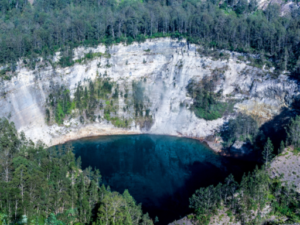 Kelimutu Mountain National Park is the smallest of six national parks in the corridor between Bali and the island of Nusa Tenggara. There are three lakes on this mountain.” Each lake has its own colors. We can imagine that they carry "dead souls", so their aspects change strangely!
Kelimutu Mountain National Park is the smallest of six national parks in the corridor between Bali and the island of Nusa Tenggara. There are three lakes on this mountain.” Each lake has its own colors. We can imagine that they carry "dead souls", so their aspects change strangely!
Kelimutu Lake is not predictable: sometimes the colors are blue, green, and black. Another time they turn white, red and blue. Once a traveler saw that one of the other lakes had turned dark brown, like a tub of chocolate! And to the south, another lake was red, and the center was blue.
This national park protects 19 endemic and endangered animals. There is also the Punai Floresian (Treron Floris), the wallace's owl (Otus Silvicola), the kancilan floresian (Pachycephala nudigula).
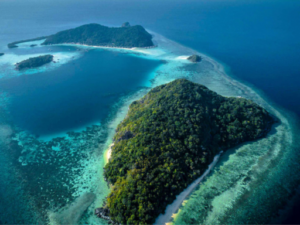 The owners are determined to preserve this little gem through a truly sustainable approach. They welcome you in suites in the heart of the forest, on the beach or even on stilts! The atmosphere is relaxed and very warm. We find this respect for captivating nature everywhere, from the architecture to the plate.
The owners are determined to preserve this little gem through a truly sustainable approach. They welcome you in suites in the heart of the forest, on the beach or even on stilts! The atmosphere is relaxed and very warm. We find this respect for captivating nature everywhere, from the architecture to the plate.
You can live a real luxury Robinsonade picnic on a private beach with golden sand: diving with fish, snorkeling, relaxation around the pool, trek in the forest, in the evening, cocktail at sunset, before stargazing...
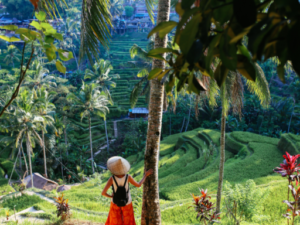 Rice fields, mountains, valleys and tropical jungles, Indonesia offers magnificent settings conducive to hiking and walking. This is also one of the best ways to discover a authentic culture, meet locals and immerse yourself in their daily lives and their way of life.
Rice fields, mountains, valleys and tropical jungles, Indonesia offers magnificent settings conducive to hiking and walking. This is also one of the best ways to discover a authentic culture, meet locals and immerse yourself in their daily lives and their way of life.
TheIsland of gods offers idyllic landscapes, surrounded by rice fields, mountains, volcanic lakes. In hiking, the island is a favorite destination for travelers who do not want the mass tourism practiced on the beaches and in the big cities. The Balinese countryside is exotic, especially when climbing the mounts Agung and Batur, two of most famous volcanoes in indonesia.
The island has a slightly wilder and more unspoiled setting than Bali, and is less touristy. Two days of ascent allow the bravest to reach the Rinjani Mount. Trekkers thus cross an imposing jungle before being able to admire the magnificent landscapes that surround the natural site.
An interesting destination for a trek stay. Central and East Java is more recommended, especially for its temples, real historical monuments, its many volcanoes and its national parks.
The region of Yogyakarta remains one of the most beautiful places in Indonesia, dominated by the Merapi. You will find there in particular the beautiful Hindu and Buddhist temples of Prambanan and Borobudur. To the east, exceptional landscapes, with unforgettable ascents on the volcanoes Bromo and Semeru, an exotic adventure!
Few travelers choose to come and discover Papua, which is more difficult to access than the other Indonesian islands. However, the Baliem Valley is one of the last lands of adventure in Southeast Asia. The Papuan peoples still live there, perpetuating their tribal traditions and their ancestral way of life.
Visitors traveling to Sulawesi can notably meet the Toraja people in the middle of the mountains and unspoiled nature. Their funeral rites and the architecture of their houses invite immersion in a fascinating culture.
Those who love the jungle can also come to Gunung Leuser National Park in Sumatra. A true refuge for Indonesian biodiversity. You may be lucky enough to encounter the island's endemic orangutans, elephants, tigers or rhinos. The Kerinci volcano is not the easiest mountain to climb, but the sensation obtained once you reach its summit is incomparable.
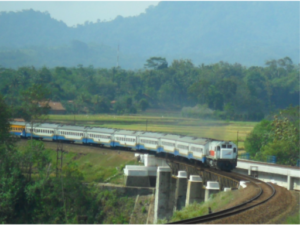 In Indonesia, if you plan to travel by train, be aware that the rail network is not very extensive. It is concentrated on the island of Java, with 2 main lines crossing the island from west to east. Apart from Java, there is also a railway network on the island of Sumatra.
In Indonesia, if you plan to travel by train, be aware that the rail network is not very extensive. It is concentrated on the island of Java, with 2 main lines crossing the island from west to east. Apart from Java, there is also a railway network on the island of Sumatra.
Taking the train remains interesting to meet locals, a timeless place of exchange, but also to admire the landscapes at your own pace, without forgetting that the stations are in the city centers and avoid unnecessary travel.
In Indonesia, you must have an international license. You must also have your original license.
You will have to adapt for left-hand drive!
Traffic is heavy. You can spend a lot of time on the road if you don't optimize your travel itinerary. With chaotic behavior, non-respect of the highway code: you have to re-learn to honk!
We come across everything on the road, especially animals , especially dogs, relatively numerous, but also cows, chickens, or others.
The scooter makes it easier to weave through traffic than a car, and the rental will also cost less. There are also many “small” rental companies (locals who rent a scooter on the side of the road, in a small shop): renting is therefore easy for this very widespread means of transport!
Find more updated information on Tourism in Indonesia in our Blog Tourismer.io

Hameau de Clapar, village de Duren, district de Bandungan, Semarang Regency, est un hameau situé dans les hautes terres sur les pentes de la montagne Ungaran.
This hamlet is the largest chrysanthemum growing place in Central Java. The chrysanthemum flowers produced by the hamlet of Clapar were distributed outside the island of Java. Apart from being famous for growing chrysanthemum flowers, the people of Duren Village also work as farmers, growing rice, chili peppers, tomatoes, mustard greens, etc. This is because the geographical location of the village which is in the highlands is good for agriculture.
Presentation of the program:
Volunteers will mainly have agricultural work by helping a local farmer. Also, before the work, the volunteers will have an orientation day on how to do the farming and get information about the history of the village, so that the volunteers really get a lot of knowledge about it and the process. of farming. The volunteers live in the local community in the village of Duren. They also have activities in the local school with local students. They will explain to students how to preserve the environment and organize activities such as student competitions, cultural exchanges, etc.
https://www.servicevolontaire.org/mission-volontariat/fr/indonesie/
